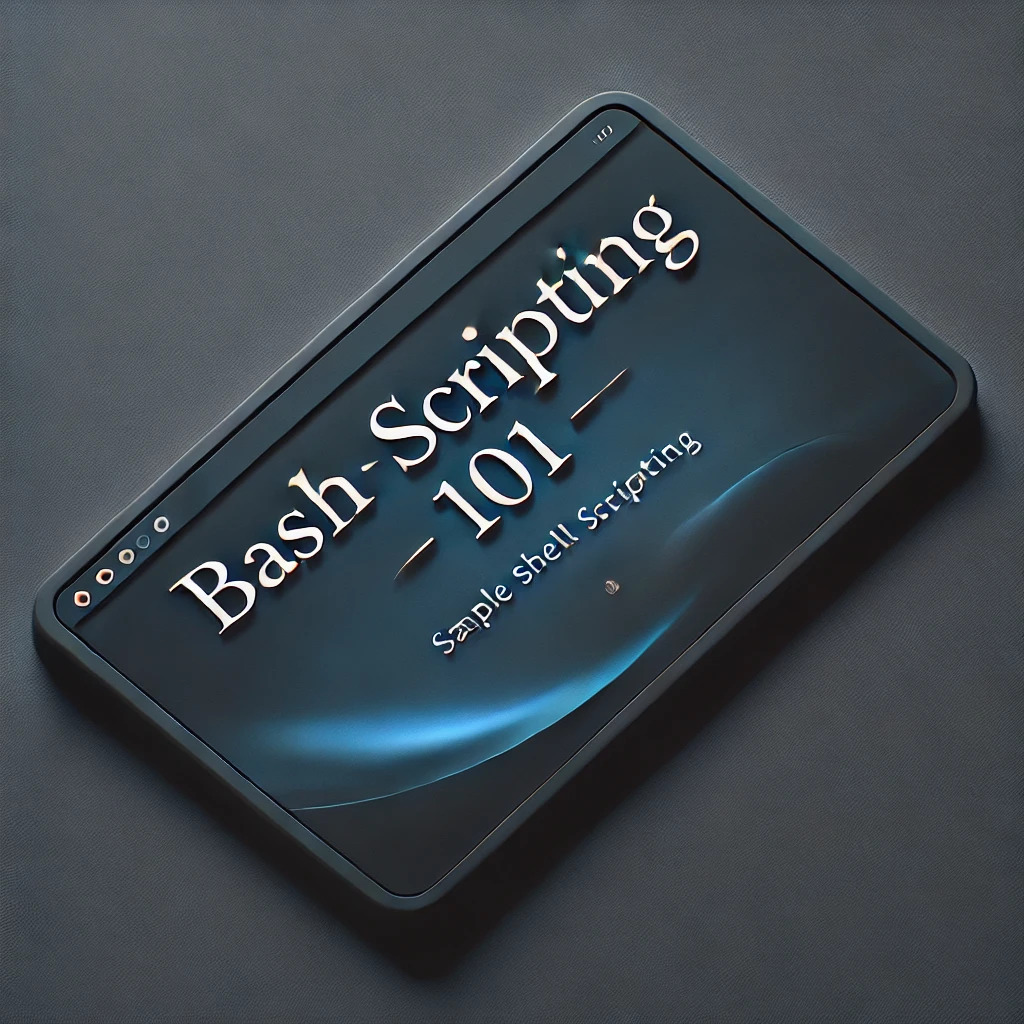BASH(Shell) Scripting 101
 Prashant
Prashant
Let's Start 🚀
In this blog, I’ll be explain the basics of Bash scripting—a powerful tool for automating tasks and managing system operations. Well this is what I learned but I try my best to explain it here.📚
When we write commands in a file, and we use that file to execute, thus making it moveable that file is called shell script. It has .sh extension 📂.
Advantages Of Shell Scripting🌟
You can avoid repetitive work.🔄
You can keep history of configuration.📜
Share the instructions.🤝
You can handle logic and bulk operations.⚙️
There are different shell implementation:-
sh:- Bourne Shell /bin/sh 🐚
Bash:- Bourne again shell /bin/bash. Bash is a shell program. Bash is a programming language.💻

Shebang line is used to tell which language you would use. You need to write it in your file in order to use it. Syntax to write shebang line :- #!/bin/bash for eg. here I use bash.📜
To run the file we use,
./filename.sh
But this will not execute because you have no permission to execute, and now we will use our permission knowledge to give permission to that file. I have mentioned in my previous blog how to give permission to a file take a reference from there. And don't forgot to use sudo.🔑
Now make some variables. It is similarly to other programming languages. Here is the syntax:-
variable_name=value
To use the variable type $variable_name. To store the output of a command in a variable use variable_name=$(command).📦
Conditionals⚖️
You all are familiar with conditional statements while learning programming language.
if :- Syntax for using
if [..built_in_commands..]else :- Syntax for using
else ....

You see there is then when you write condition in if statement next step is to set instructions for that we use then then type something. After that we use else. And at the last we use fi to close the statement.
Operators⚙️
In bash there are different types of operators:-
Arithmetic Operators:- Basic mathematics operators, similar to other programming languages (+,-,*,/ etc). I think its pretty basic.
Relational Operators:- These are used for comparisons. There are various types:-
-eq Equal to
-ne Not equal to
-lt Less than
-le Less than or equal to
-gt Greater than
-ge Greater than or equal to
- String Operators:- These are for strings.
= Equal
!= Not Equal
-z String is null
-n String is not null
- File Test Operators:- These are used to test various properties associated with a file.
-e Checks whether file exist or not
-d Checks whether file is a directory
-f File is a regular file
-r Checks whether file is readable
-w Checks whether file is writable
There are other operators too but I thinks these are the most common till now.
Passing Parameters📨
Well in simple words, when you type something in CLI then it can be used inside the bash scripts. And to make this possible we use $ sign.
$ sign:- So this starts from 0 to 9 and uses special character too.
$0 Basically used for naming
$1-$9 These are used to store the passed i/p at CLI
$@ Represent all the parameter passed to the script
$* Represent all the argument in a single string
$# Represent total number of arguments provided
There are other advance method too, you can learn them but its better when you need to use them.
Loops🔄
Similar to programming languages there are different types of loops. For example:- while, for, until, select.
1.For Loop:- Syntax of for loop:-

Output

In syntax you notice do and done. Do indicates that execute the commands until the condition is satisfies, and done indicates that loop is over.
Note:- For arithmetic operators use double brackets (()). And while creating your .sh file don't forgot to give your file necessary permissions.🔑
2.While Loop:- Syntax of while loop:-

The do and done have the exact same function as in for loop.
3.Until Loop:- Opposite of while loop. Syntax of until loop:-
until [ condition ]; do
# Commands to be executed
done
4.Select Loop:- It creates a simple list from the given options. Syntax of select loop:-
select var in list; do
# Commands to be executed
done
Functions
We use functions in every programming languages, and here it is same work as in other languages. Better overview of codes, reuse code again, etc.
Syntax of functions:-
function name_function {
----logic----commands---
}
name_function(){
---logic---commands---
}
How to call a function, its simple type the function name for example:-
greet() {
echo "Hello, $1!"
}
greet "Prashant"
And the same example can be used to show how to pass the values to a function.
To return the value in a function we use $?, it holds the return value of the function or last executed command.
Resources📚
Refer to this site to deepen your knowledge in bash. But as I say always don't learn whole at one go, learn as you grow/move.🌱https://www.javatpoint.com/bash-introduction
For revision https://www.youtube.com/watch?v=I4EWvMFj37g.
You can refer for more topics like AWK Arrays SED etc https://www.youtube.com/watch?v=tK9Oc6AEnR4
Note:- AWK is important just watch it.👀 I have seen some interviews where interviewer asks about AWK command. So just watch it. It is easy topic.
What I've Learned About Bash: A Beginner's Perspective🌟
Learning the basics of Bash scripting has been an exciting journey, and I hope this blog helps you on your own path. While there's always more to discover, mastering these fundamentals is a great start. 🚀
In my next blog, I’ll explore environment variables, how to create them, networking concepts, and SSH.🌐
Feel free to share your thoughts or questions in the comments—I’d love to hear about your experience!💬
This article is on dev.io too, you can check it out. https://dev.to/prashant_1111
Subscribe to my newsletter
Read articles from Prashant directly inside your inbox. Subscribe to the newsletter, and don't miss out.
Written by
